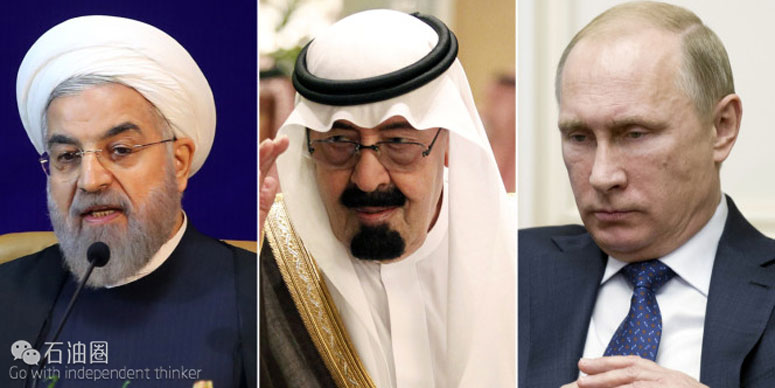Low oil prices and economic reform put one-third of Saudi Arabia’s transportation, housing and healthcare projects on hold
Low oil prices continue to impact producers around the world, including Saudi Arabia, which spearhead the decision in late-2014 for OPEC to defend market share over price. The kingdom is now considering cutting more than $20 billion of projects, and reducing ministry budgets by a quarter to help soften the blow of lower commodity prices.
The government is reviewing thousands of projects valued at about 260 billion riyals ($69 billion) and may cancel a third of them, three sources told Bloomberg, all of whom asked to remain unnamed due to the sensitive nature of the discussions. The decision could impact the budget for several years and may include transport, housing and healthcare projects. The government plans to carry out the review within six months, the sources said.
A separate plan includes merging some government ministries and eliminating others, other sources said.
Saudi Arabia’s budget shortfall ballooned to 16% of GDP, the highest percentage among the world’s biggest 20 economies, last year as the kingdom wrestled with lower oil prices. The International Monetary Fund expects the shortfall to ease to below 10% of GDP in 2017, but meantime Saudi Arabia continues to look for ways to balance its budget.
Debt and budget cuts appear to be the short-term strategy for Saudi Vision 2030
The government has delayed payments owed to contractors and it has started cutting fuel subsidies. Deputy Crown Prince Mohammed bin Salman also plans to sell a stake in the kingdom’s state-owned oil major Saudi Aramco, as the country undertakes a plan to diversify its economy away from crude oil.
The program, called Saudi Vision 2030, involves a number of ministries with various objectives, but one of the main objectives of the Ministry of Finance is to increase non-oil revenues. This will help to reduce the country’s overall exposure to oil prices, but not in the near future.
“The revenue and economic diversification strategy being pursued will only start to yield results over the medium- to long-term,” Raza Agha, VTB Capital’s chief economist for the Middle East and Africa, said. “In the short term, it is a question of living with lower oil prices by cutting some capital spending, and financing what’s left via debt sales and drawing down foreign reserves.”
To help finance its plans in the nearer-term, Saudi Arabia is considering its first international bond early next month, which the kingdom believes could raise more than $10 billion. Public debt levels will increase to 30% of economic output by 2020 from 7.7%, according to targets set out in Saudi Vision.
GDP is forecast to grow 1.5% this year, the slowest rate in more than a decade, excluding the Global Economic Crisis. The IMF estimates medium-term growth could settle around 2.5%.
Saudi Arabia faces a rush of double-edged swords
While the Saudi government looks for ways to strengthen its balance sheet, lower spending will make it more difficult to bolster the economy.
“Much lower government spending will translate into lower private sector growth, which has already started to be seen in economic indicators this year,” said John Sfakianakis, director of economic research at the Gulf Research Center. “It’s a double-edged sword as the government has to rationalize spending because of the drop in oil revenues.”
The other conundrum facing Saudi Arabia and its partners in OPEC is how much support to lend to oil prices. Saudi Energy Minister Khalid al-Falih and his Russian counterpart, Alexander Novak, released a joint statement saying “there is an imperative to mitigate excessive volatility harmful to global economic stability and growth,” and that they would explore ways to stabilize oil prices.
OPEC may be hesitant to raise prices higher than $60 per barrel though, with concern that if prices go any higher it might prompt a new wave of activity in the U.S. and a renewed glut. The group is currently targeting a price between $50 and $60 per barrel, according to Iranian Oil Minister Bijan Zanganeh. Officials inside of OPEC believe it is unlikely that the group will announce significant production cuts during the group’s next meeting on September 26.
U.S. crude oil production averaged 9.4 million barrels per day (BOPD) in 2015, according to the EIA September Short Term Energy Outlook. EIA forecasts U.S. production to average 8.8 million BOPD in 2016 and 8.5 million BOPD in 2017. Production levels in 2017 for this forecast are 0.2 million b/d higher than in the August STEO. The upward revisions to production largely reflect an assumption of higher drilling activity, rig efficiency, and well-level productivity than assumed in previous forecasts.
According to EIA data, benchmark North Sea Brent crude oil spot prices averaged $46/barrel in August, a $1/barrel increase from July. This was the fourth consecutive month in which Brent spot crude oil prices averaged between $44 and $49.
In its Short Term Energy Outlook today, the EIA forecasts Brent crude oil prices will average $43/barrel in 2016 and $52/barrel in 2017. West Texas Intermediate (WTI) crude oil prices are forecast to average $1 per barrel less than Brent in 2016 and 2017, the agency said.


 石油圈
石油圈
